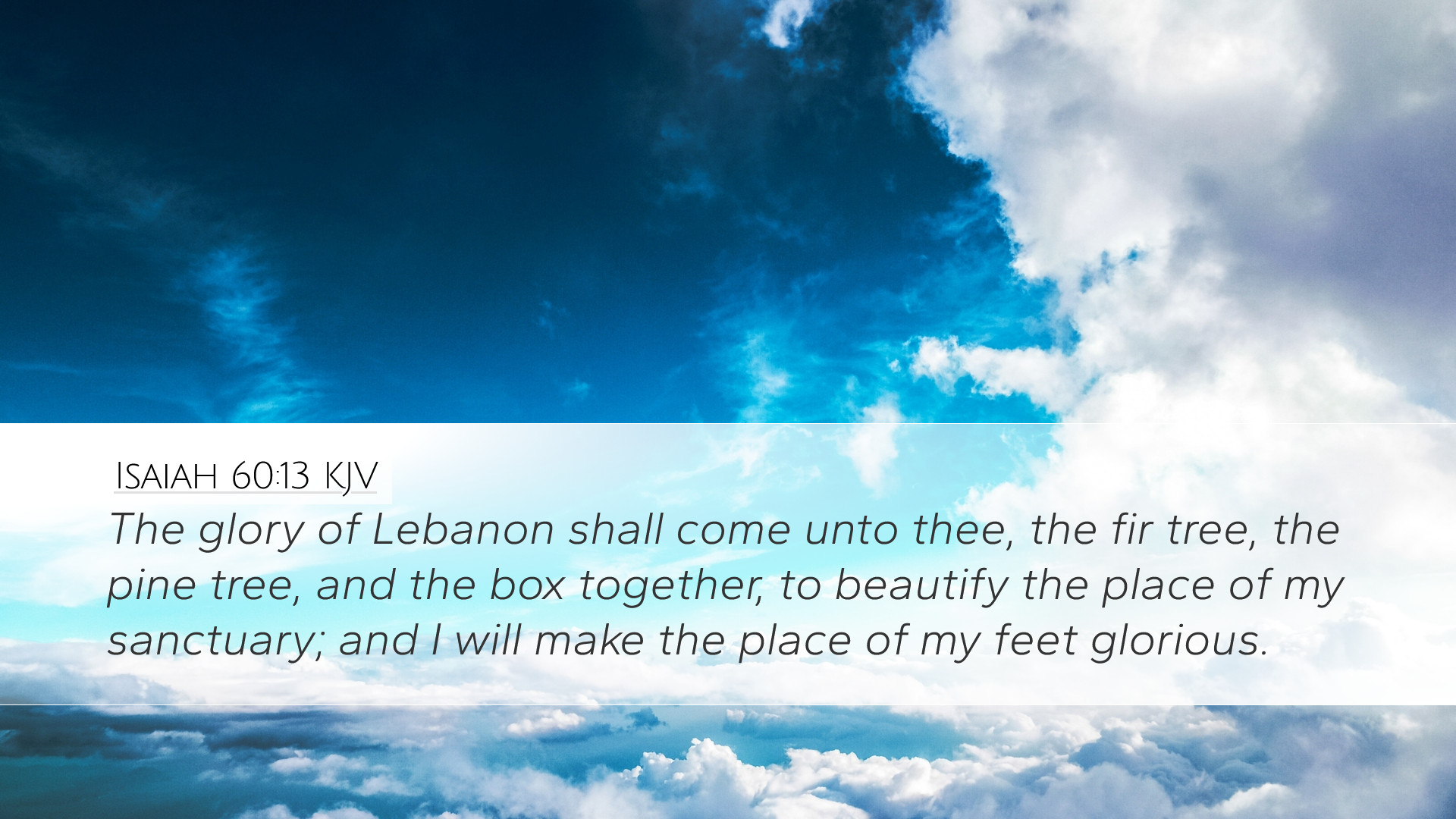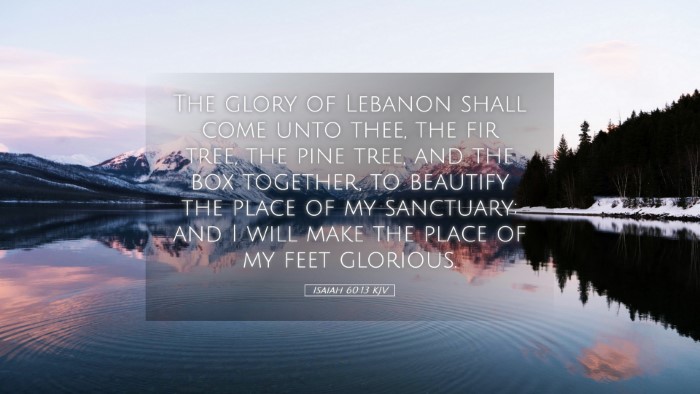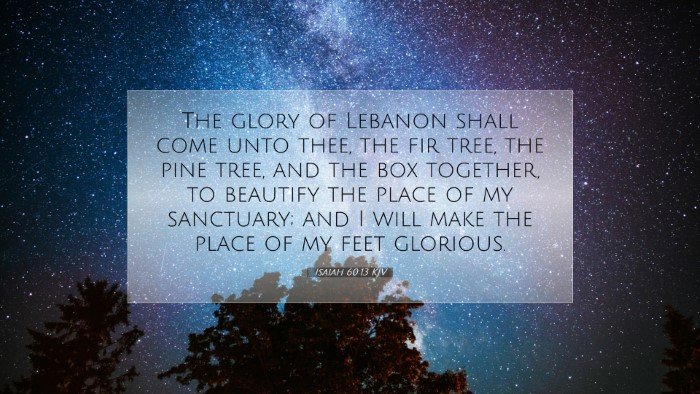Commentary on Isaiah 60:13
Isaiah 60:13 reads: "The glory of Lebanon shall come unto thee, the fir tree, the pine tree, and the box together, to beautify the place of my sanctuary; and I will make the place of my feet glorious."
Introduction
This verse is set within the context of Isaiah’s prophetic vision of restoration and glory for Jerusalem. It highlights God's promise to transform His sanctuary and, by extension, His people, using materials from the natural world that symbolize strength, permanence, and beauty.
Understanding the Symbolism
The mention of the "glory of Lebanon" evokes the might and majesty of the cedars of Lebanon, known for their durability and scent. Matthew Henry notes that these trees are esteemed for their quality, signifying that God will adorn His house with what is precious and suitable, reflecting His glory itself.
- Cedars of Lebanon: A symbol of strength and endurance, these trees symbolize God's lasting presence and support.
- Fir, Pine, and Box Trees: Each of these trees brings its own unique characteristics and beauty, representing the diverse gifts that God brings into His sanctuary.
Theological Insights from Commentators
Albert Barnes interprets the "glory of Lebanon" as indicative of both physical beauty and spiritual significance, where the materials symbolize the abundance of God’s provision and the richness of His grace.
Adam Clarke emphasizes that God’s selection of these trees portrays His intention not only to enrich the physical temple but also to signify the inherent beauty of His divine glory. He notes that the beauty of the temple represents the splendor of God's plan for His people.
God's Presence in His Sanctuary
The phrase "to beautify the place of my sanctuary" indicates a deepened understanding of how God values His dwelling among His people. Both Henry and Barnes correlate this beautification to the New Testament truth that believers themselves are now the temple of the Holy Spirit.
- Divine Presence: The emphasis on God beautifying His sanctuary draws attention to His desire to be actively present within His creation.
- Spiritual Application: Just as God beautifies His temple, He also works in the lives of the faithful, transforming them into vessels of His glory.
Prophetic Context and Fulfillment
This verse not only speaks to the restoration of Jerusalem after the Babylonian exile but also foreshadows the future glory of Christ's church. Both Henry and Clarke assert that the ultimate fulfillment of this promise reaches its zenith in the coming of Christ, who is the embodiment of God's glory.
Encouragement for Believers
Reflecting on Isaiah 60:13 encourages believers to recognize their own worth and purpose in the Kingdom of God. The illustration of beautifying the sanctuary serves as a reminder that God is actively at work in our lives, transforming us into reflections of His glory.
- Beauty in Diversity: Just as various materials come together to beautify the sanctuary, so do believers contribute unique gifts to the body of Christ.
- God’s Commitment: This verse reassures believers that God is committed to His people, actively enhancing their lives and His church.
Conclusion
Isaiah 60:13 encapsulates the themes of glory, restoration, and the divine presence that are foundational to understanding God's work in the world. As we meditate on this verse, let us be inspired by the beauty that God brings forth within His sanctuary and acknowledge our role in manifesting His glory in our respective contexts.
As theologians, pastors, and students of the Word, may we strive to reflect the beauty of Christ, just as the materials signify beauty and wealth in the temple’s construction. In doing so, we fulfill our calling to be living temples that glorify God.


